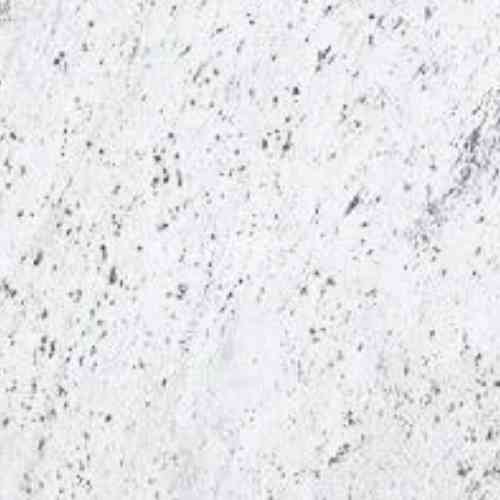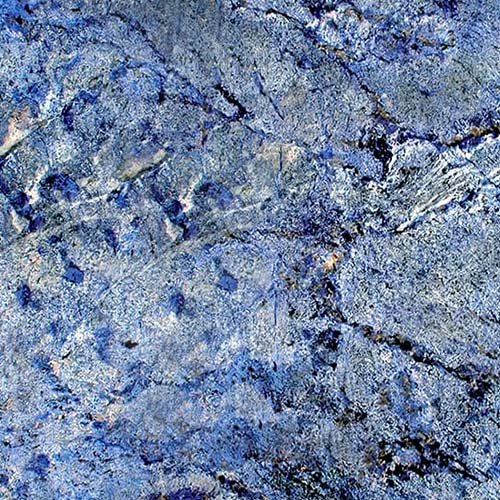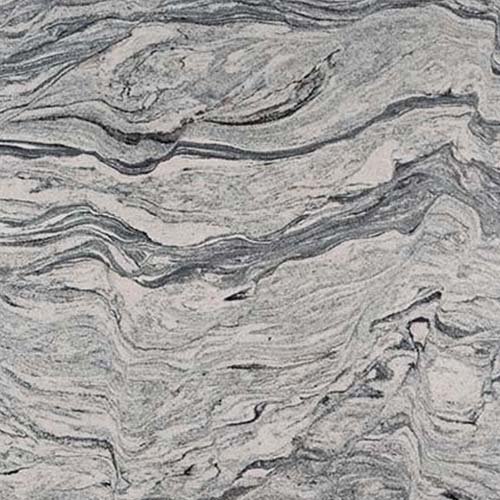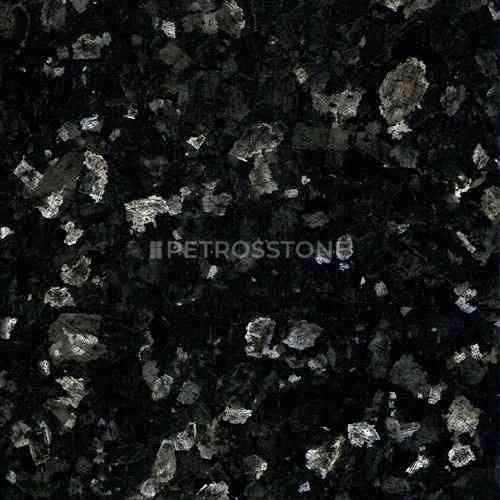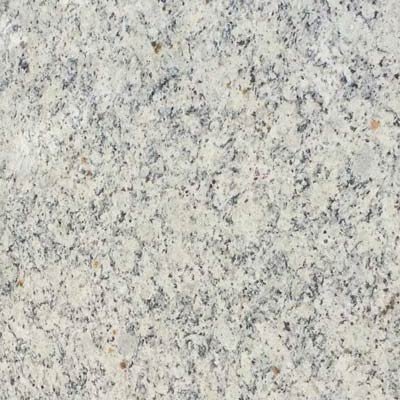
In this article we will review more than 10 types of edge profiling options – ranging from straight edge, bullnose to beveled edges and so and and help you decide which is the best edge for your kitchen countertops, islands or steps.
Selecting a granite edge is not simply a design choice, it affects safety, comfort, durability and cost. Regardless of whether it is a countertop installation on kitchen, central island, steps or others, the edge profile is important in the functionality and the experience of the surface.
Edge styles have various benefits. Corners of round shapes are best suited to family-friendly rooms, whereas detailed and ornate profiles will create an element of luxury and sophistication in luxury kitchens. The edges which are easier to clean are selected, and those which are chosen are because of visual depth or free flow.

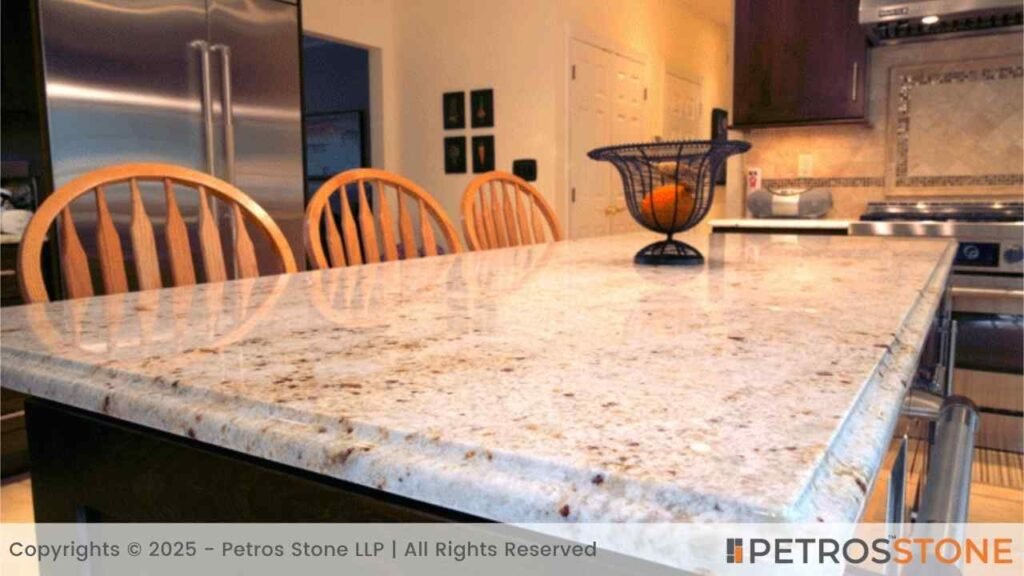
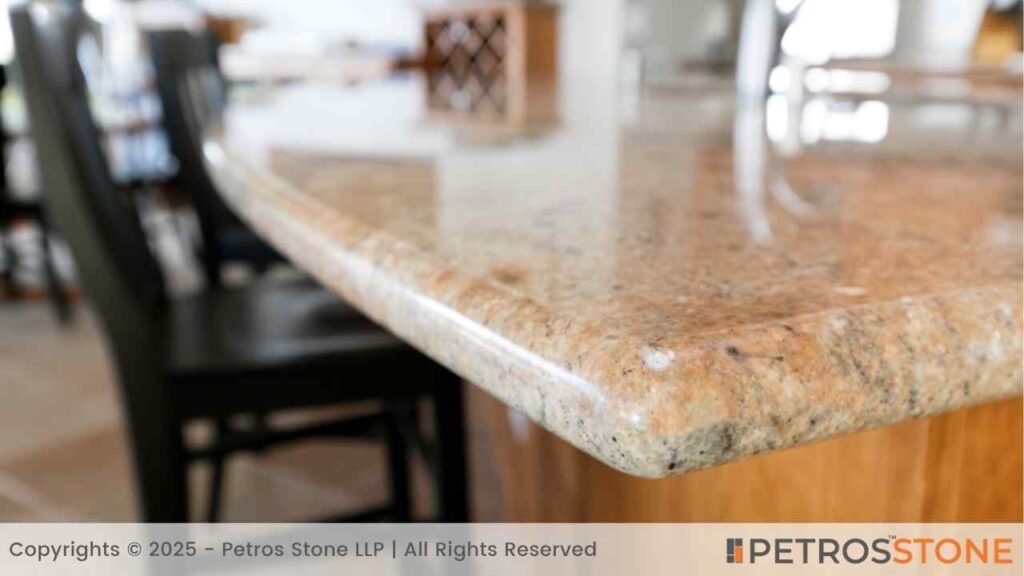

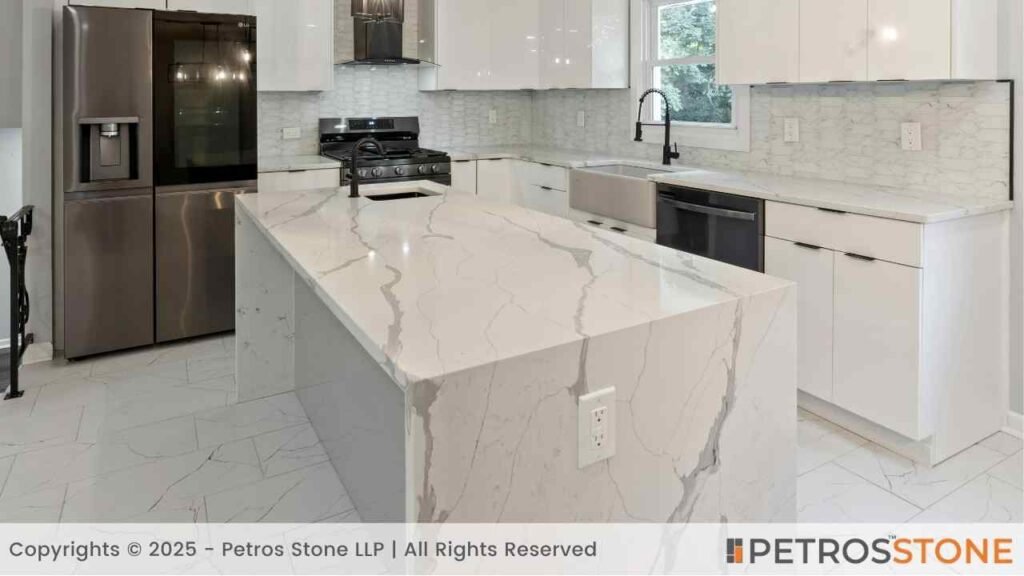
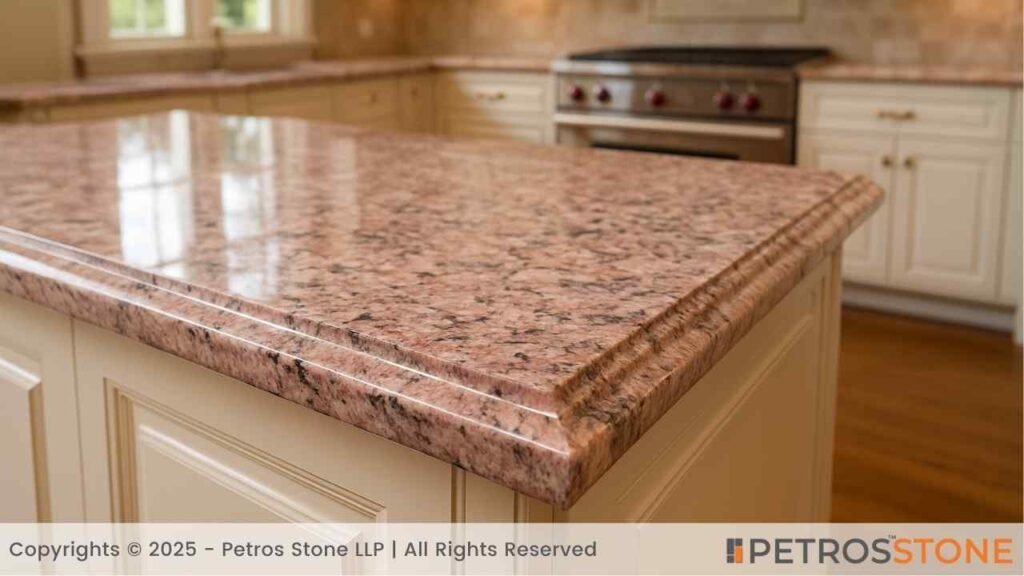

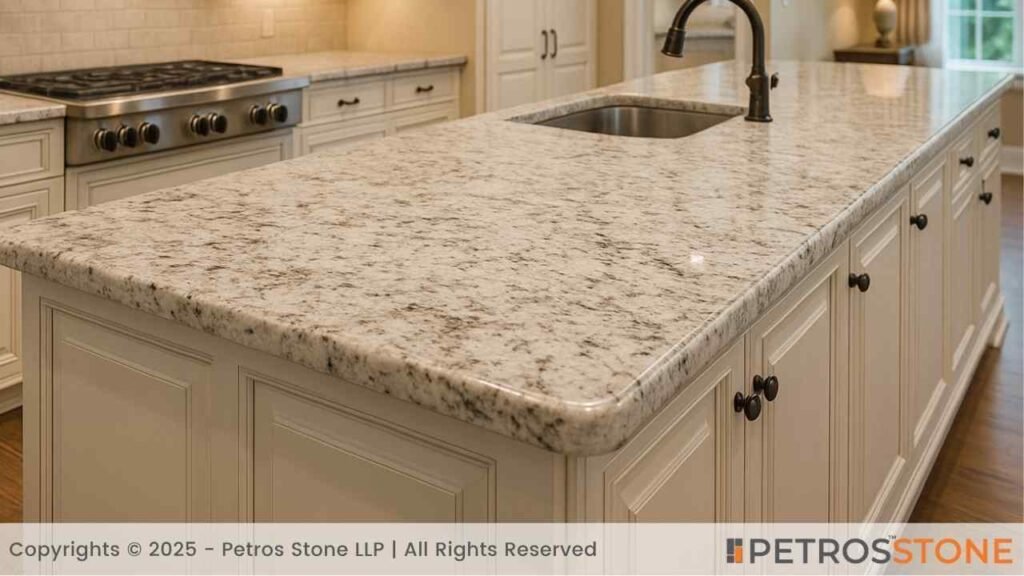
In this article, we will give you a tour of the most common granite/quartz edge profiles with their positive and negative aspects as well as the most suitable application. You might be in the process of designing a contemporary kitchen or making an improvement to a rustic staircase; in either case, there are tips to assist you in the process of picking an edge profile to coordinate with your style, serve your lifestyle and fit in your budget.
Types of Granite Edge Profiles
Straight Edge (Eased Edge)

Use & Style: An excellent choice of a modern and minimalistic kitchen, because it casts a sleek, flat appearance, and it is easy to clean.
Disadvantage/Consideration: The corners may be sharp and can chip without a little rounding.
Beveled Edge

Use and Style: Suits modern or transitional patterns, the slanting cut provides a touch of depth and can take the effect.
Disadvantage/Consideration: The bevelled edge will be more apt to wear or scratch with use.
Bullnose Edge

Use & Style: An entirely rounded profile is soft, traditional and very safe in high-traffic or homes with families.
Disadvantage/Consideration: It might make the Granite thinner and spills might run down the cabinetry.
Half Bullnose Edge

Use & Style: The combination of modern and traditional use; rounded top makes it elegant and the density of stone is still visible.
Disadvantage/Consideration: The water may still drip down to the cabinets and the bend is much difficult to clean as compared to straight edges.
Ogee Edge

Use & Style: An S-shaped decorative edging that is ideal in a luxury kitchen or bathroom; very ornate, and formal in touch.
Disadvantage/Consideration: The complexity of the shape will trap dust and it will be more complex to clean and maintain it.
Dupont Edge
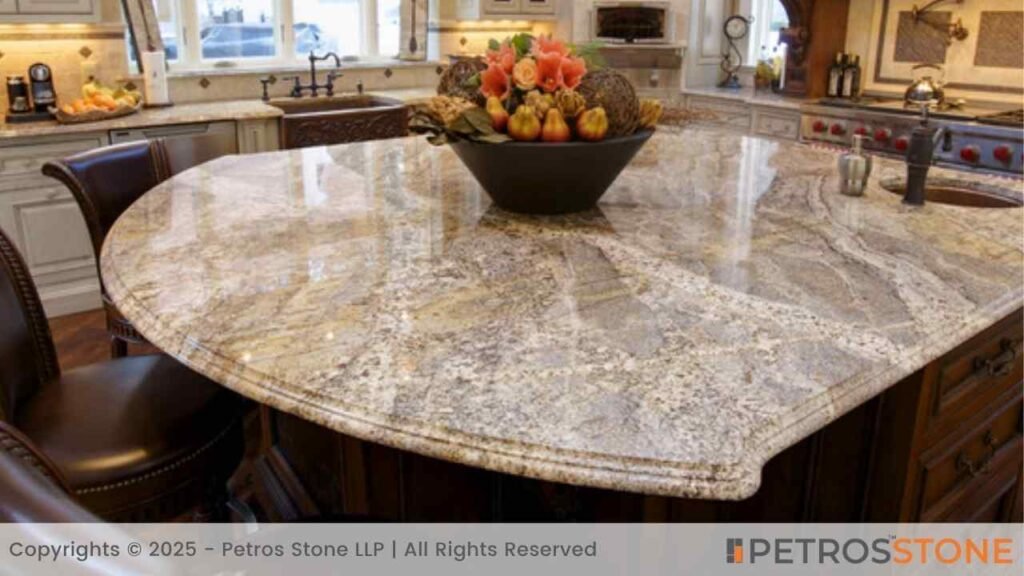
Use and style: High-end formal profile that borrows a straight drop mixed with a rounded bottom, a profile mainly used in upscale environments.
Disadvantage/Consideration: The material is labour-intensive and expensive, in addition, it is not most suitable in casual or minimalist designs.
Waterfall Edge

Use and Style: Dramatic modern edge which extends down the sides of islands or the countertops seamlessly.
Disadvantage/Consideration: Takes more stone and skilled work of fabrication and hence costs more.
Cove Edge

Use & Style: The concave groove shape; will fit in traditional and formal environments; will match with other edge variations.
Disadvantage/Consideration: The groove was a place where dust and crumbs could get accumulated and this takes additional cleaning.
Chiseled Edge
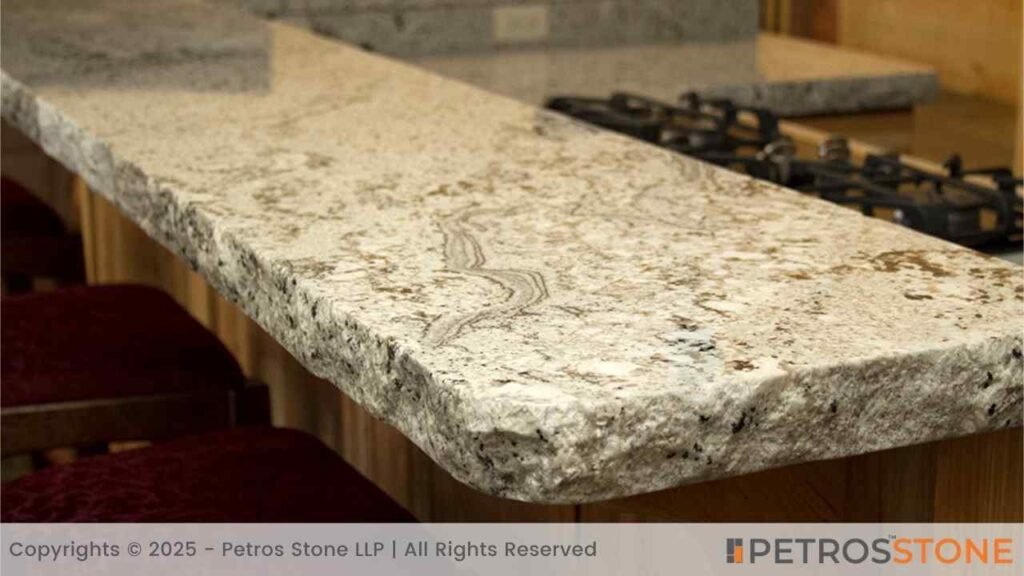
Use & Style: Use & Style: it gives a rustic, natural look; and it is great for rustic kitchens, farmhouse-style kitchens, or outdoor kitchens.
Disadvantage/Consideration: It feels rough to touch and is harder to clean.
Mitered Edge

Use & Style: Will give a thick slab effect that is luxurious and rich by simply committing two pieces at an angle of 45 degrees; will be perfect on modern islands.
Disadvantage/Consideration: This needs careful fabrication; otherwise seams can appear.
Pencil Edge (Quarter Round)

Use & Style: Minimalist and current to design with a gentle, rounded edge, low profile and safe.
Disadvantage/Consideration: No visual impact as compared to more detailed edges.
Custom Edges (Laminated, Decorative, Double Ogee)
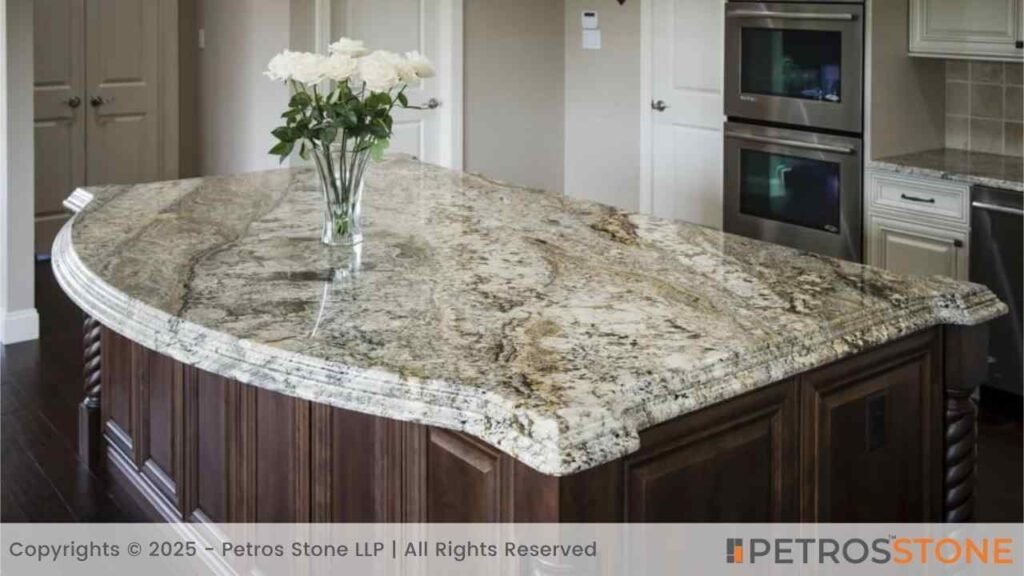
Use & Style: Custom designs combine several types of edges in order to create a fancy and distinctive look.
Disadvantage/Consideration: The fabrication cost and complexity is expensive and not ideal with tight budgets and simple designs.
Best Granite Edges for Kitchen Countertops
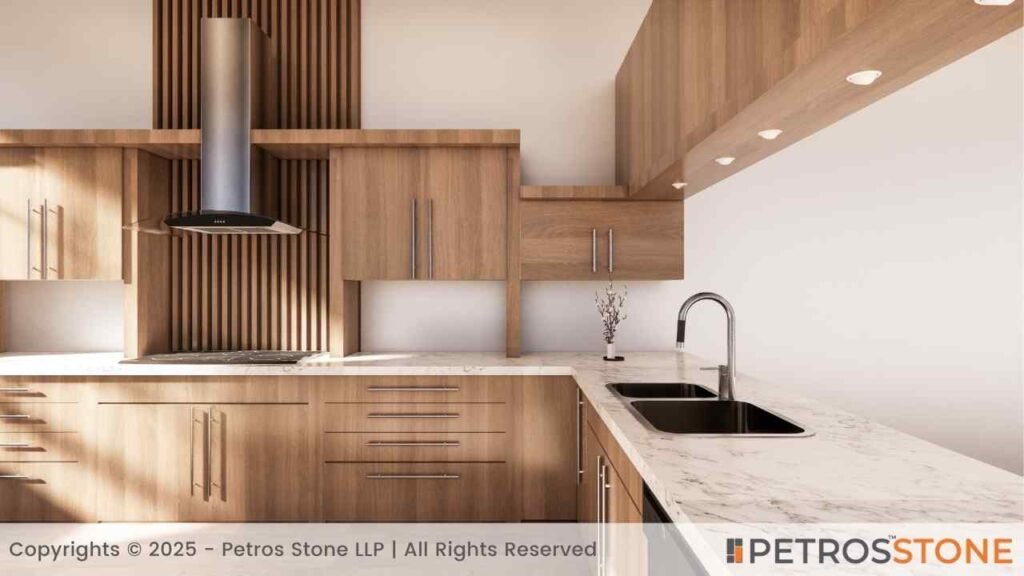
Functionality vs. Design
- Functionality implies convenient cleanability, resistance to chips, safety and comfort.
- The design shows the type of style-modern, traditional or transitional.
Recommended Edges for Daily Use
- Eased (straight): It is the simplest, most effective and easily maintained.
- Half bullnose or pencil: likewise smooth and safe, though a little less rigid.
- Edges should not be ornate (ogee/dupont etc) where durability and ease of application is a priority.
Kid-Friendly Options
- Bullnose or half bullnose edges gets rid of sharp corners which is suitable to have around children.
- Straight edges can also be used so long as they are rounded a little bit, but corners are not safe with kids in motion.
Modern vs. Classic Kitchen Designs
| Design Style | Best Edge Styles | Why They Work |
| Modern/Minimal | Straight, beveled, pencil | Clean lines, discreet profiles |
| Transitional | Half bullnose, beveled | Soft yet contemporary |
| Classic/Traditional | Bullnose, ogee, dupont, cove | Ornate detailing suits timeless appeal |
Best Granite Edges for Kitchen Islands
Visual Centerpiece Considerations
Your kitchen island also tends to be the centrepiece, and as such, you should choose edges that are decorative and practical. Ogee, waterfall or other decorative edges can make it dramatic and sophisticated.
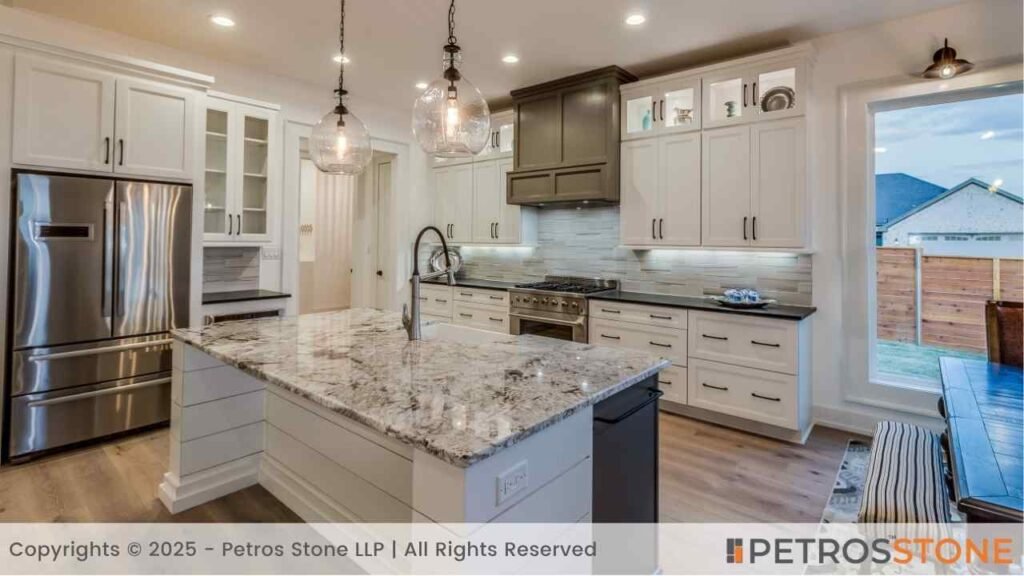
Ideal Edges for Seating Areas
- Pencil Edge: A plush, curvy and comfortable pencil edge especially suited to a seating space; perfect for a bar stool or dining section.
- Half Bullnose: Gives a smooth and relaxed finish which is easy on the legs with a relaxed appearance.

Edges That Highlight Thickness
- Mitered Edge: Stone is cut at 45-degree angles so it appears to be a thick slab-an excellent choice when you are trying to achieve bold, contemporary style.
- Waterfall Edge: Continues the granite along the sides in a dramatic flow and a luxury effect.
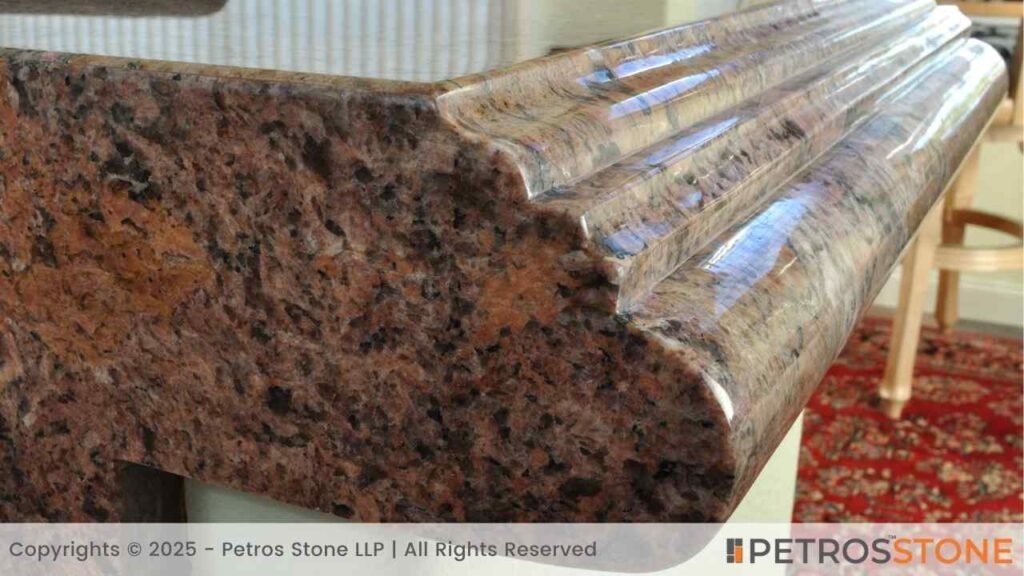
Combining Edges for Style
Use mixed edge styles to create depth, such as a mitred top with waterfall sides. It is also possible to employ ogee, or dupont edges on the bar-facing sides without maintaining straight or eased edges on the prep sides.

Best Granite Edges for Steps and Staircases
Safety and Anti-Slip Concerns
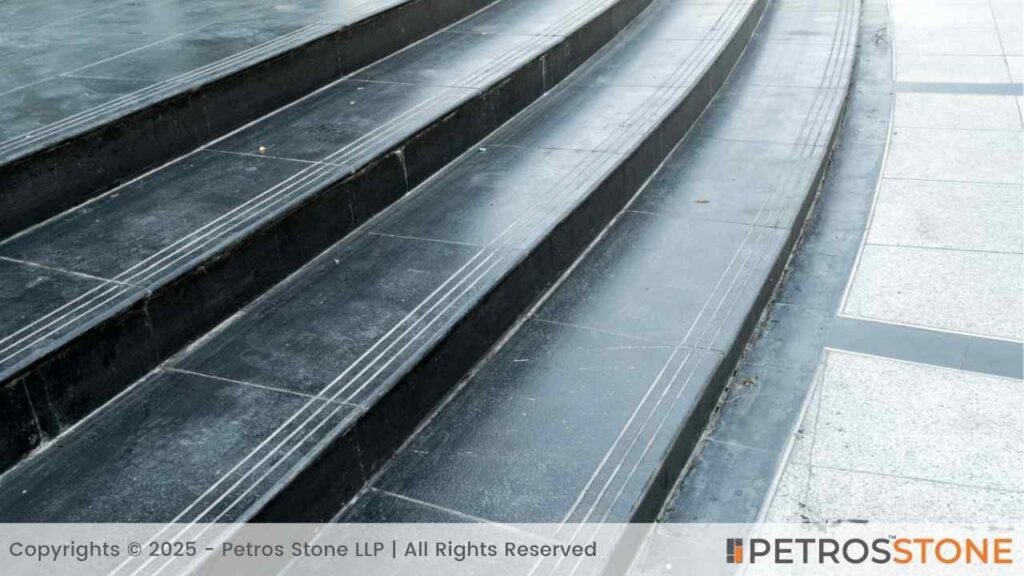
- Rounded edges such as bullnose and half bullnose avoid tripping.
- Textures or honed surfaces lower slip chances.
- Do not have sharp or polished edges in frequently used staircases.
- The curved or slightly rounded edges offer safer steps.
- Natural or chiseled finish steps are also used in outdoor steps, to provide a grabbing point.
Durability and Edge Strength
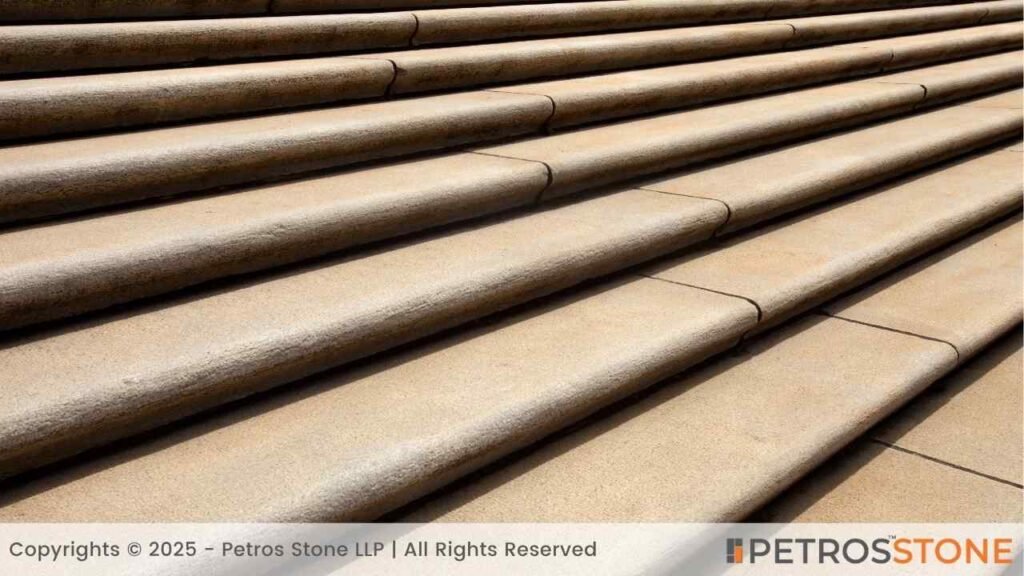
- Beveled and straight edges are resistant to wear and tear.
- Bullnose ends are robust and lead to impact evenly.
- Granite of a thicker nature and offering strong support down below enhances strength.
- Overhangs are to be reinforced along the edges.
- Edge polishing is consistent to provide durability.
Suitable Profiles for Steps
| Edge Profile | Why It’s Suitable for Steps | Things to Consider |
| Bullnose | Fully rounded; safe underfoot and minimizes tripping hazards | Slightly reduces the visible thickness |
| Half Bullnose | Rounded on top, flat underneath; offers safety with a modern look | Can be slippery if highly polished |
| Straight (Eased) | Clean, flat edge; simple and modern | Sharp corners—less safe unless slightly rounded |
| Beveled Edge | Angled edge helps soften the transition between step and riser | Corners can still chip with heavy impact |
| Pencil (Quarter Round) | Small rounded edge; provides safety while keeping a sleek appearance | Less noticeable than bullnose, subtle look |
| Chiseled Edge | Natural, textured finish; great for outdoor steps or rustic styles | Not ideal for indoor or barefoot traffic |
Matching with Flooring or Walls
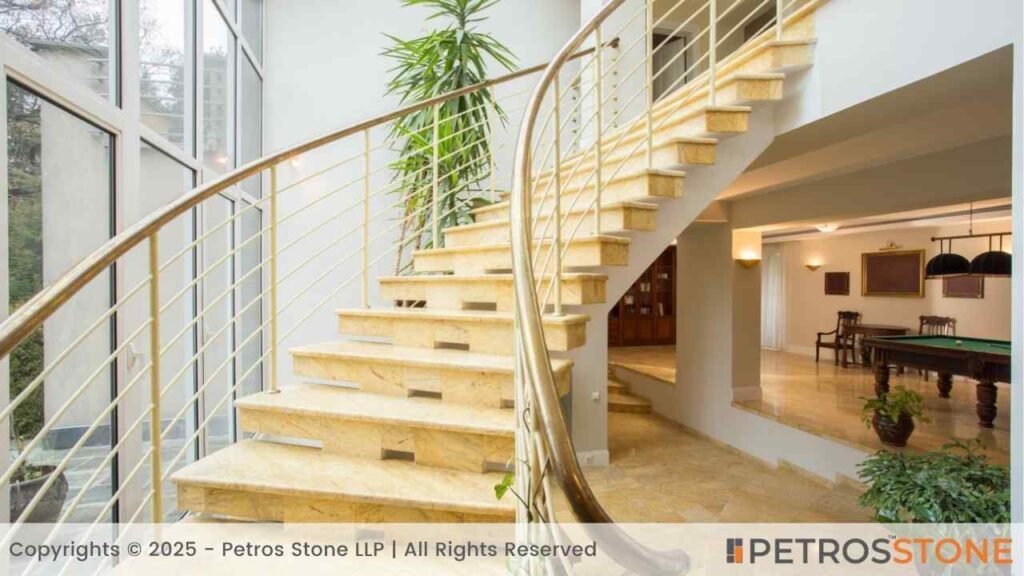
- Apply a similar colour of granite or pattern to support the design’s continuity.
- Select edge profiles that match surfaces around to create a harmonious appearance.
- Rustic flooring can be matched with chiseled or textured edges.
- An elegant bullnose compliments on shiny tiles.
- The use of contrast has to be balanced and visually effective.
Which Granite Edges Are Least Likely to Chip?

Factors That Cause Chipping
| Factor | Explanation |
| Sharp Corners | Edges like straight or mitered have pointed corners that are more vulnerable. |
| Thin Overhangs | Unsupported granite (especially on islands) is more prone to cracking or chipping. |
| Frequent Impact Zones | Areas near sinks, dishwashers, or seating get bumped often, increasing damage risk. |
| Hard Objects Dropping | Dropping heavy pots, pans, or tools on sharp edges can cause chips. |
| Edge Style Complexity | Ornate designs (like ogee or dupont) have more cut angles and thinner curves that weaken edge integrity. |
| Poor Fabrication or Installation | Improper sealing, polishing, or fitting can lead to weak spots or stress points. |
| Stone Quality | Lower-grade or porous granite is structurally weaker and more chip-prone. |
Most Durable Edge Styles
Bullnose, half bullnose, and beveled edges have rounded, or chamfered edges, which distribute impact well.
Edges to Avoid in High-Use Areas
Ogee, dupont or mitered corners or other knife-edge ornate styles, also frequently crack or chip.
Maintenance and Repair Tips
- Use sealants on granite edges.
- Keep a stone fabricator on stand‑by to patch chips small nicks can usually be patched with color-matched epoxy.
Aesthetic Trends: What’s Outdated and What’s In
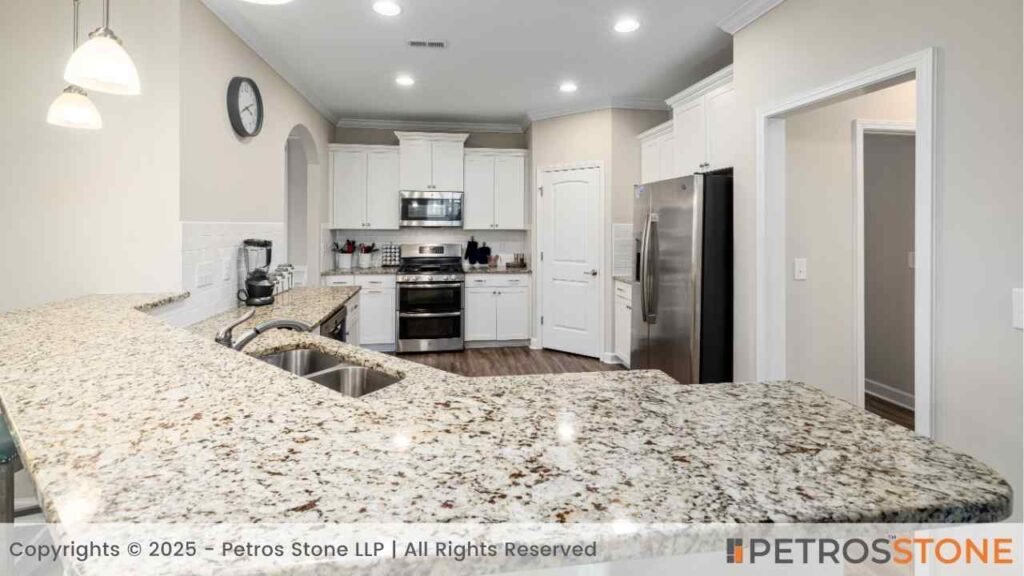
Styles Going Out of Fashion
- Oversized ogee and dupont edging is heavy and of excess ornament in the majority of contemporary kitchens.
- This is because these styles are deemed to be too conventional and incompatible with the cleaner design trends in the contemporary times.
- Bulky bullnose edges also are becoming phased out because of their dated, rounded design.
Edges Trending in 2025
- Minimalist eased piping is sought after due to its clean and simple looks that has been fitting into contemporary kitchen designs.
- It have been suggested that the use of pencil and bevel edges is trickling upwards because they provide just the right amount of detail, not something flashy.
- The trend continues as waterfall edges on kitchen islands are still used as a bold design statement.
Minimalist vs. Ornate Styles
- Minimalist: Straight, eased, and bevel edges blend with slim, modern environments with understated grace.
- Ornate: Ogee, dupont and layered custom designs are suitable on formal or classic interiors with luxurious finishes.
Choosing Timeless Options
- Clean edges such as ease and pencil always stay in fashion and can harmonize with the majority of decor styles.
- To make the granite permanently look good, the decorations must supplement the granite, rather than dominate it.
Cost Comparison of Granite Edges

Price by Complexity
| Edge Style | Relative Cost* | Notes on Labor and Material |
| Eased / Straight | Low | Simplest cut, minimal polishing |
| Pencil / Half Bullnose | Low–Mid | Slight rounding, minimal extra labor |
| Beveled | Mid | Additional angle cut, moderate labor |
| Bullnose | Mid‑High | Full rounding, full polishing |
| Cove | Mid‑High | Curved section cut, detailed polishing |
| Mitered | High | Two‑piece seams, precise joins |
| Ogee / Dupont | High | Ornate profiles, hand‑polish details |
| Waterfall / Custom | Highest | Extra stone, complex cuts, large slabs |
Cost Implications for Islands vs. Countertops vs. Steps
| Installation Area | Cost Implications | Why It Costs More or Less |
| Kitchen Islands | High | Multiple exposed sides, often require premium finishes (e.g., mitered, waterfall) |
| Countertops | Moderate | Only one or two visible edges; standard profiles like eased or bullnose keep cost down |
| Steps/Staircases | Moderate to High | Require precise cutting, extra polishing, and anti-slip considerations |
Budget-Friendly Edge Options
- Eased/straight edge: easiest and cheapest, good in contemporary minimal kitchens.
- Half bullnose: Partially rounded, somewhat more secure than straight, and does not cost significantly more.
- Beveled edge: Adds interest in appearance without the cost of more elaborate patterns.
- Pencil (quarter round): Minor improvement in safety and appearance with little cost difference.
- Avoid custom or layered edges: These are costly in labour and supplies.
Need Help deciding?
The selection of granite edge should strike the balance between aesthetic appeal, functionality, affordability, and safety. On daily countertops, eased, pencil or half bullnose are sensible, lasting, and inexpensive. With island showpieces, you can attach drama with a mitered or waterfall edge, but it will cost you more.
With this guide, you’re well‑equipped to pick an edge that fits your design, lifestyle, and budget perfectly.
Feel free to get in touch for a free consultation, quote, and get a detailed understanding from our experts here at Petros®. Visit https://petrosstone.com/ or call +91-8446360361 and WhatsApp

Hello!
I’m Dr Mridali, a content writer with a background in dentistry and a passion for turning complex topics into clear, engaging stories. From healthcare to architecture, I create blogs that inform, educate, and connect with readers. With every piece, I aim to blend accuracy with creativity to make information truly valuable.
Brown Granite
White Galaxy Granite
Blue Bahia Granite
Silver Cloud Granite
Black Pearl Granite
Dallas White Granite


